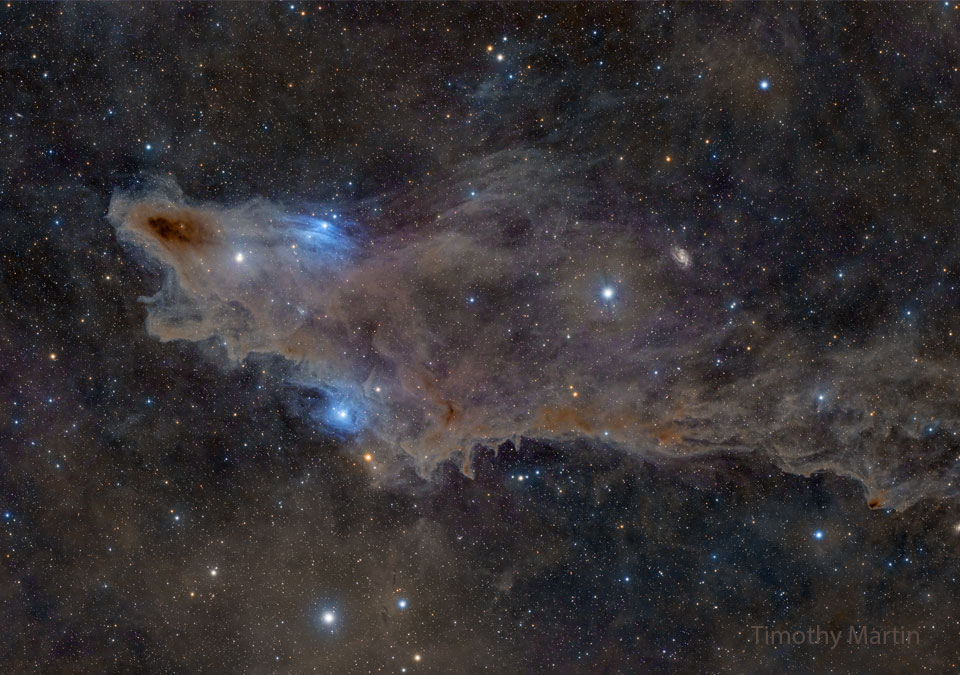LDN 1235:鲨鱼星云
(原标题: LDN 1235: The Shark Nebula)
2025-03-18
浏览次数: 454
地球上没有大到足以容纳鲨鱼星云的海洋。这个掠食者幽灵不会对我们构成威胁,因为它只由星际气体和尘埃组成。图中的暗尘有点像香烟的烟雾,是在巨大恒星的凉爽大气中形成的。在排出气体和引力再凝聚之后,大质量恒星可能会利用它们的高能光和快速恒星风作为雕刻工具,在它们的诞生云中雕刻出复杂的结构。它们产生的热量使阴暗的分子云蒸发,同时使周围的氢气分散并发出红光。在解体过程中,我们人类可以把这些巨大的云想象成常见的标志,就像我们对地球上的水云所做的那样。包括较小的尘埃星云,如Van den Bergh 149和150,鲨鱼星云,有时被编目为LDN 1235,跨度约15光年,位于约650光年远的埃塞俄比亚国王星座(仙王座)。探索你的宇宙:随机APOD生成器
查看原文解释
There is no sea on Earth large enough to contain the Shark nebula. This predator apparition poses us no danger as it is composed only of interstellar gas and dust. Dark dust like that featured here is somewhat like cigarette smoke and created in the cool atmospheres of giant stars. After expelling gas and gravitationally recondensing, massive stars may carve intricate structures into their birth cloud using their high energy light and fast stellar winds as sculpting tools. The heat they generate evaporates the murky molecular cloud as well as causing ambient hydrogen gas to disperse and glow red. During disintegration, we humans can enjoy imagining these great clouds as common icons, like we do for water clouds on Earth. Including smaller dust nebulae such as Van den Bergh 149 & 150, the Shark nebula, sometimes cataloged as LDN 1235, spans about 15 light years and lies about 650 light years away toward the constellation of the King of Aethiopia (Cepheus). Explore Your Universe: Random APOD Generator
© Timothy Martin
